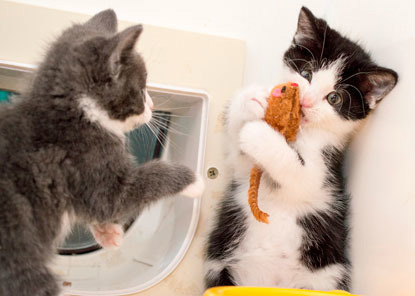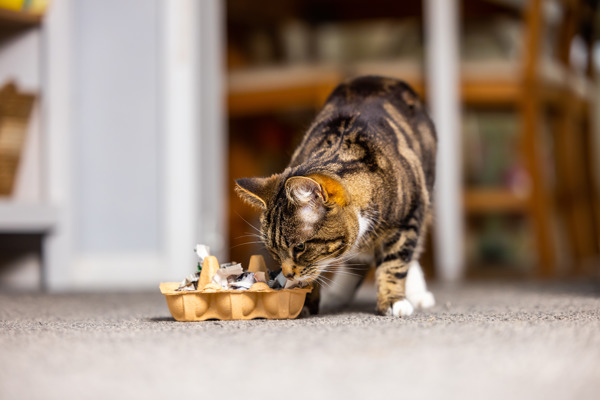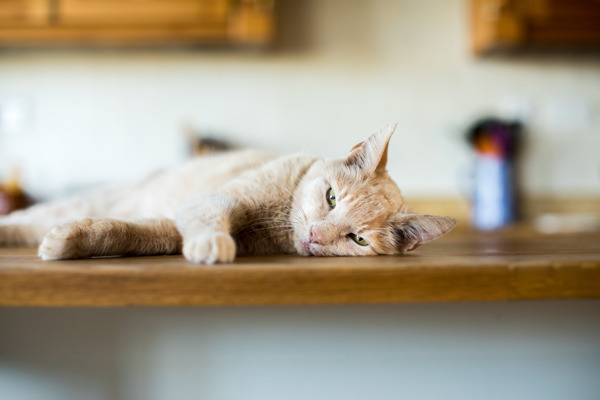Discover why cats go crazy for catnip
If you’ve ever seen your cat around catnip then you may have seen them react in a rather bizarre manner. It can cause some rather unusual and entertaining behaviours, including:
- casual sniffing or chewing
- vigorous head-rubbing
- drooling
- rolling around
So what exactly is it about catnip that cats love so much? Read on to learn more about this curious plant…
What is catnip?
The catnip plant's Latin name is nepeta cataria. It is actually a member of the mint family, which is why it is sometimes referred to as catmint. It is native to Europe, Asia and Africa. It was later brought to North America and now grows as a weed on all these continents.
Its effects on cats have been known to science since the 1700s. But modern research has revealed exactly how it works.

What does catnip do to cats and why do they like it?
When cats sniff catnip, a chemical compound called nepetalactone that’s found in the plant enters their nasal tissue. There it binds to protein receptors that stimulate sensory neurons. These then send signals to the brain. These signals reach two parts of the brain:
- the amygdala, which handles emotional responses
- the hypothalamus, responsible for behavioural responses
In the brain they create a reaction like that caused by a cat’s natural sex pheromones.
The effects will usually last for a period of around 10 minutes. After this the cat will become temporarily immune to the plant’s effects for 30 to 60 minutes.
Can cats eat catnip?
If a cat eats catnip in small doses it is safe. But eating it will not have the same effects as sniffing it.
There hasn’t been much research done on the effects of catnip on cats. But it’s believed to be safe and non-addictive.
Are all cats affected by catnip?
Only around 70 to 80% of domestic cats react to catnip. The response is inherited from one or both parents.
Kittens aged under six months are also typically immune as they have not yet reached sexual maturity.
Wild cats including lions, tigers and leopards can go crazy for catnip when they are exposed to it.
What effect does it have on humans?
Catnip does not affect humans in the same way as cats but it does still have its uses. For example, it can be used as an insect repellent to keep flies and mosquitoes at bay.
If you're feeling crafty, have a go at making your own catnip mouse toy using this handy knitting pattern.



